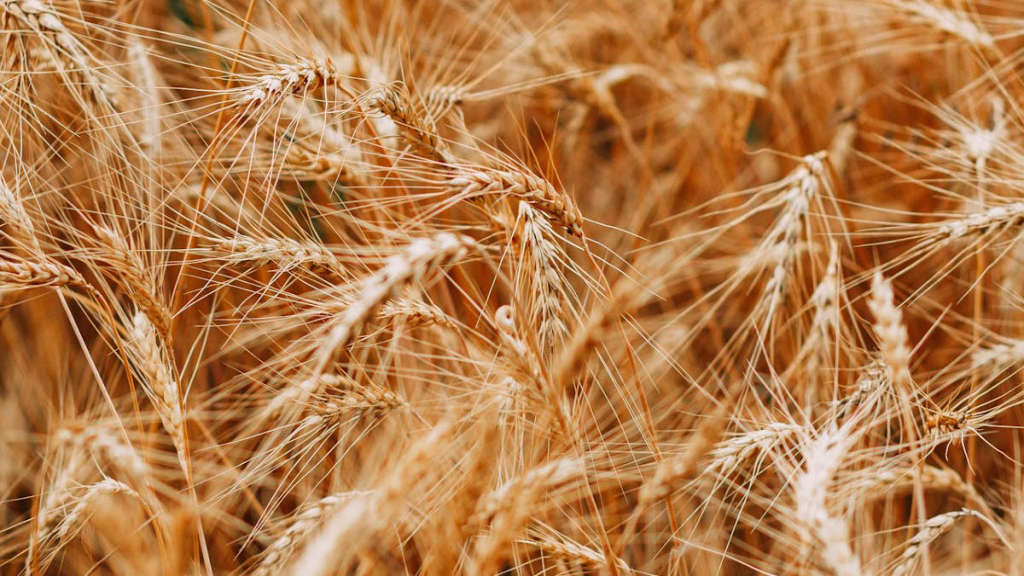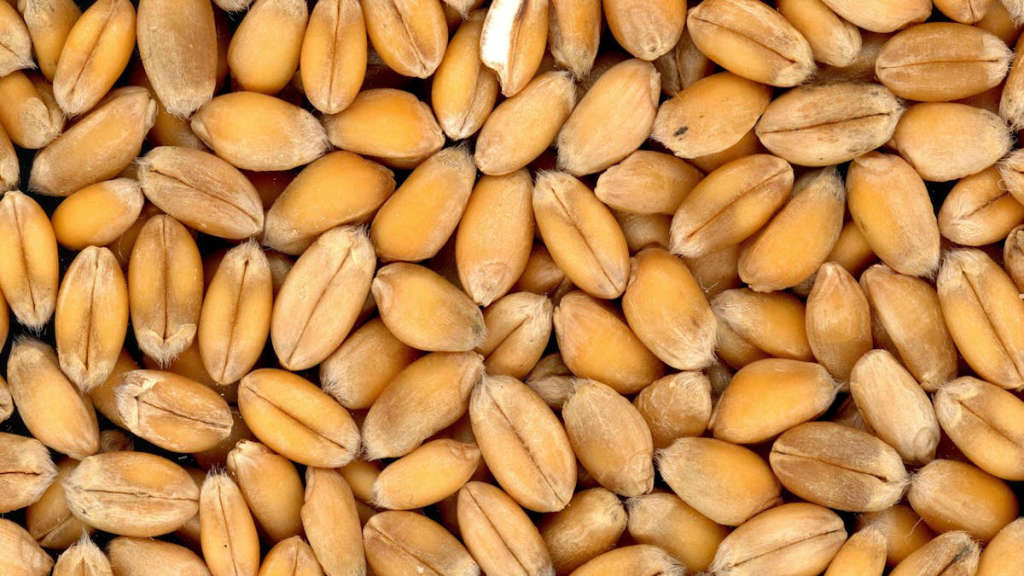Wheat has long been a staple food for cultures around the world, revered not only for its versatility in cuisine but also for its substantial health benefits. Within its golden grains lies a wealth of essential nutrients, particularly an impressive amount of protein. Understanding the wheat protein content is crucial for those looking to enhance their diet. This article will unravel the intricate relationship between wheat’s protein levels and its overall nutritional benefits, shedding light on why it’s a critical component of a balanced diet.
Main Points
- Understanding the basic structure of wheat and its types.
- The significance of wheat protein content in muscle building and recovery.
- Exploring the health benefits associated with consuming wheat protein.
- Practical tips on how to incorporate wheat into your daily meals.

Understanding Wheat Protein: Types, Sources, and Their Impact on Health
Wheat protein plays a significant role in our diets, yet many of us remain unaware of its various types and sources. This lack of awareness can lead to confusion, particularly when distinguishing between different proteins derived from wheat. In this article, we will delve into the different types of wheat protein, their sources, and the impact they have on health.
Types of Wheat Protein
Wheat protein primarily consists of two main categories: gluten and non-gluten proteins. Understanding these categories can be crucial for individuals with dietary restrictions or those seeking to optimize their nutrition.
- Gluten: This is the most well-known wheat protein and is essential for the elasticity and structure of bread and baked goods. It consists of two proteins, glutenin and gliadin, which together form a strong network when mixed with water. Those with celiac disease or gluten sensitivity must avoid gluten to maintain their health.
- Non-Gluten Proteins: This category includes other proteins found in wheat, such as albumins and globulins. Unlike gluten, these proteins are less harmful for individuals with gluten sensitivity and can provide a range of health benefits.
Sources of Wheat Protein
Wheat protein can be found in a variety of foods, not only in traditional bread and pasta. Recognizing these sources can help individuals incorporate more protein into their diets.
- Whole Wheat Flour: This flour retains the bran, germ, and endosperm of the wheat kernel, providing both fiber and protein.
- Semolina: Often used in pasta production, semolina is derived from durum wheat and is rich in protein content.
- Seitan: Also known as wheat meat, this popular vegetarian protein source is made from gluten and is favored for its meat-like texture.
Impact on Health
Understanding the impact of wheat protein on health is crucial, as it can be both beneficial and detrimental, depending on individual circumstances. Here are some aspects to consider:
- Nutritional Value: Wheat protein provides essential amino acids necessary for muscle repair and overall health. However, it is not a complete protein, lacking certain amino acids that must be obtained from other sources.
- Digestive Health: Some individuals may experience digestive issues related to wheat consumption, particularly those with gluten sensitivity or celiac disease. It’s vital for such individuals to seek alternatives that suit their dietary needs.
- Allergies and Intolerances: Wheat allergies are not uncommon and can result in significant reactions. Identifying these allergies early on is essential for avoiding serious health complications.
In summary, understanding the types, sources, and health implications of wheat protein is vital in today’s dietary landscape. While wheat can be a nutritious option for many, it is crucial to remain mindful of individual dietary needs and any potential sensitivities. Make informed choices to enjoy the benefits that wheat protein can bring to your health.

How Wheat Protein Contributes to a Balanced Diet: Benefits for Body and Mind
In today’s health-conscious world, the role of wheat protein in our diets cannot be overstated. While many people often associate wheat with carbohydrates, it’s essential to recognize that wheat also offers significant protein content. So, how does this wheat protein contribute to a balanced diet, and what are its distinctive benefits for both the body and mind? Let’s delve deeper into this intriguing subject.
The Composition of Wheat Protein
Wheat is a source of protein that is unique because it contains gluten, a protein complex beneficial for many but challenging for some. This complication leads to a general confusion surrounding wheat and gluten, particularly among those who are sensitive to it. When consumed in moderation, wheat protein can serve as a vital nutrient.
Physical Benefits of Wheat Protein
One of the foremost advantages of integrating wheat protein into your diet is its contribution to muscle development and repair. This nutritional powerhouse contains essential amino acids that support muscle growth, making it especially beneficial for athletes and individuals engaging in regular physical activities. Moreover, wheat protein aids in satiety, helping to control appetite, which is crucial for anyone focused on weight management.
Wheat Protein and Mental Well-Being
On the mental front, wheat protein positively impacts cognitive functions. The amino acids derived from wheat protein are precursors to neurotransmitters, which play a significant role in mood regulation. A sufficient intake of wheat protein can lead to improved mental clarity and focus. However, it’s vital to balance this protein source with other nutrients for optimal cognitive benefits.
Wheat Protein and Dietary Balance
Incorporating wheat protein into a diverse diet is essential. For instance, combining it with fruits, vegetables, and healthy fats creates a well-rounded meal. This balance not only enhances the absorption of nutrients but also ensures that the body receives a comprehensive array of vitamins and minerals. A potential meal showcasing this balance could include whole grain bread topped with avocado and tomatoes, emphasizing the harmonious blend of wheat protein with other vital nutrients.
Potential Concerns Regarding Wheat Protein
Despite its many benefits, some individuals may face challenges when consuming wheat due to gluten intolerance or celiac disease. For them, it is crucial to explore alternative protein sources while ensuring their diet remains balanced. Many gluten-free grains and legumes can provide similar benefits without the adverse effects.
| Nutritional Component | Benefit |
|---|---|
| Wheat Protein | Supports muscle growth and repair |
| Amino Acids | Aids in neurotransmitter production |
| Complex Carbohydrates | Provides sustained energy |
Conclusion: Embracing Wheat Protein
In summary, wheat protein indeed plays a multifaceted role in promoting a balanced diet. Its contributions to physical health and mental well-being underscore the importance of this nutrient in our daily meals. However, awareness and attention to individual dietary needs are essential, ensuring that everyone can benefit from the diverse offerings of wheat.
This exploration into the world of wheat protein serves as a reminder of the vast potential locked within our food choices. By embracing a balanced diet rich in various nutrients, including wheat protein, we can nourish not just our bodies but our minds as well.

Debunking Myths About Wheat: Exploring Its Role in Nutrition and Dietary Choices
In recent years, discussions around wheat have become increasingly polarizing. Many people believe that wheat is inherently harmful to health, often linking it to various dietary woes. However, these assertions warrant closer examination. Understanding the role of wheat in a balanced diet can help dispel these wide-ranging myths.
The Foundations of Wheat: A Nutrient-Rich Grain
Wheat is a staple food that has nourished civilizations for centuries. It is rich in essential nutrients, contributing to overall health. Whole wheat, in particular, offers significant amounts of dietary fiber, B vitamins, and minerals such as iron and magnesium. So, one cannot simply dismiss it as a villain in our diets. Research indicates that whole grains, including wheat, are linked to a decreased risk of chronic diseases. This brings us to the essential question: Why do so many people fear wheat?
Understanding Gluten: The Misunderstood Protein
One major factor fueling the wheat-phobia is gluten. Many have adopted gluten-free diets, assuming that eliminating gluten means improved health. However, gluten is a naturally occurring protein found in wheat and other grains, and for the general population, it poses no danger. Only individuals with celiac disease or gluten intolerance need to avoid gluten strictly. Therefore, for most, the fear surrounding gluten may be exaggerated, leading to unnecessary dietary restrictions. It’s crucial to differentiate between sensitivity and general aversion.
The Impact of Processed Foods
Moreover, much of the negativity surrounding wheat arises from its association with processed foods. White bread, pasta, and pastries often have minimal nutritional value due to refining processes that strip away fiber and nutrients. However, this issue shouldn’t be conflated with whole wheat products. Whole wheat bread, for instance, retains its nutrients and offers health benefits. Therefore, the conversation should shift from “wheat is bad” to “processed wheat products should be moderated.”
Nutritional Balance: A Key to Healthy Eating
Ultimately, the secret lies in moderation and balance. Like any food, when consumed excessively, even nutritious grains can contribute to health issues. The emphasis should be on a varied diet enriched with fruits, vegetables, proteins, and healthy fats. Embracing whole grains, including wheat, can enhance this balance. So where does that leave wheat?
Rather than demonizing wheat, we should recognize its nutritional potential and appreciate its role within a healthy diet. By understanding the difference between whole grains and their processed counterparts, individuals can make informed choices that align with their health goals. In conclusion, next time you slice a loaf of whole wheat bread, remember; it’s not merely a source of calories but a reservoir of health benefits waiting to nurture you.
Conclusion
In exploring the significance of wheat protein content, we uncover just how vital it is to our diets and the broader food industry. Many people may not realize the quality and quantity of protein derived from wheat can significantly impact nutritional choices. This understanding plays a crucial role in developing health-conscious products, particularly for those seeking plant-based alternatives. By focusing on wheat protein content, we can foster a greater appreciation for this versatile grain. Its potential to meet dietary needs is both promising and essential. Embracing such knowledge not only enriches our meals but also contributes to more sustainable food practices. Thus, it’s clear that recognizing the importance of wheat protein content is a step towards making informed and healthier choices.
Frequently Asked Questions
What is the protein content of wheat?
The protein content of wheat varies by type, but it typically ranges from 8% to 15%, with bread wheat having a higher protein content than other varieties.
How does wheat protein content affect baking?
Higher protein content in wheat contributes to the formation of gluten, which affects the texture and elasticity of dough. This is particularly important for bread making, as it helps create the necessary structure.
Can people with gluten sensitivity consume wheat?
Individuals with gluten sensitivity or celiac disease should avoid wheat altogether, as its protein content includes gluten, which can trigger adverse reactions in these individuals.